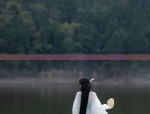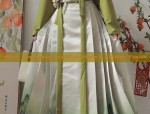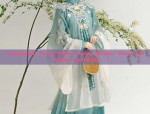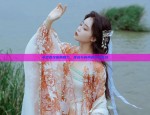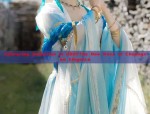The Splendor of Tang-Style Hanfu Headdress for Women:A Detailed Exploration
In the annals of history, the Tang Dynasty stands out as a golden age in Chinese culture and fashion. The elegance and sophistication of Tang-style Hanfu, particularly the headdress worn by Women, are still celebrated today for their intricate designs and rich cultural significance. This article delves into the fascinating world of Tang-style Hanfu headdresses for women, examining their evolution, craftsmanship, and the cultural symbols they embody.
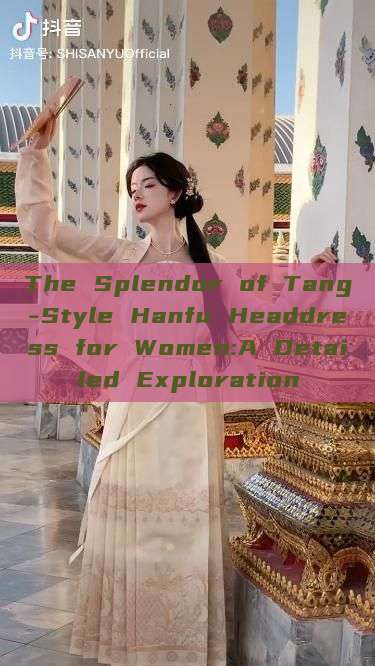
The Tang Dynasty, spanning from 618 to 907 AD, was a period of great prosperity and cultural exchange in China. It was during this era that Hanfu, the traditional Chinese clothing, reached its peak of development. Women's headdresses were not just accessories to enhance beauty but were also symbols of status, culture, and social norms.
The headdresses of Tang-style Hanfu for women were incredibly diverse and intricate. One of the most distinctive features was the use of exquisite hairpin designs that were often adorned with precious gems and intricate carvings. These hairpins were used to secure the hair in an elegant style, often in a bun at the back of the head or in a more elaborate arrangement at the front. The hairpins were often made of gold, silver, jade, or other precious materials and were decorated with patterns that reflected the wearer's status and taste.
Another notable aspect of Tang-style Hanfu headdresses was the use of flowers and other natural elements. Women often wore flowers in their hair, which not only added a touch of beauty but also symbolized purity and virtue. These flowers were often fresh or made from silk and were arranged in a way that complemented the wearer's face and hairstyle.
The craftsmanship behind Tang-style Hanfu headdresses was remarkable. The use of intricate embroidery, beading, and other decorative techniques added to the beauty and uniqueness of each headdress. The patterns and designs often reflected themes from nature, such as clouds, flowers, birds, and fish, as well as geometric patterns and traditional Chinese symbols like the dragon and phoenix. These patterns not only enhanced the aesthetic value of the headdress but also carried deep cultural significance.
The headdresses of Tang-style Hanfu also served as a medium for expressing social status and identity. During the Tang Dynasty, women's clothing and headdresses were often governed by strict social norms and regulations. The type of headdress worn by a woman reflected her marital status, social rank, and even her age. For instance, married women often wore more elaborate headdresses than single women, and the older a woman was, the simpler her headdress tended to be.
The influence of Tang-style Hanfu headdresses extends far beyond the historical era. Today, these headdresses are still celebrated for their beauty and cultural significance. Many modern designers have taken inspiration from Tang-style Hanfu to create contemporary versions of these headdresses that are suitable for modern lifestyles. These modern headdresses often combine traditional elements with modern designs and materials to create something that is both beautiful and practical.
In conclusion, the splendor of Tang-style Hanfu headdresses for women is a testament to the rich cultural heritage of China. These headdresses not only enhance beauty but also carry deep cultural and historical significance. By exploring the evolution, craftsmanship, and cultural symbols of these headdresses, we can gain a deeper understanding of Chinese culture and history.

 Previous Post
Previous Post


